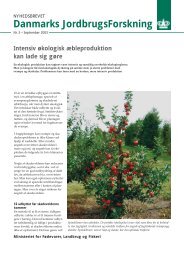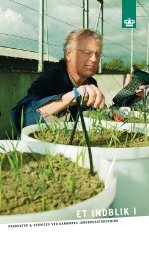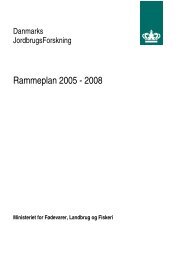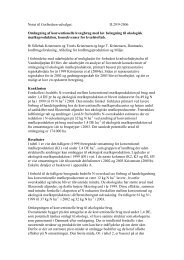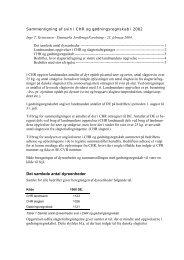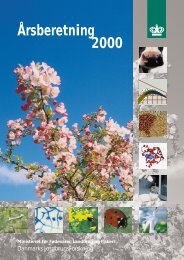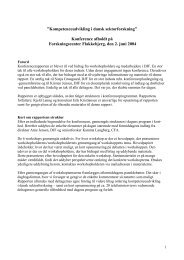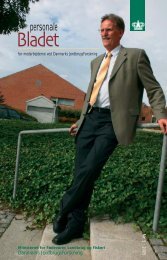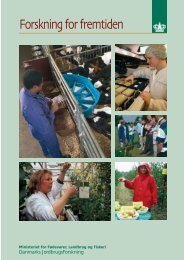Reproduction performances and conditions of group-housed non ...
Reproduction performances and conditions of group-housed non ...
Reproduction performances and conditions of group-housed non ...
Create successful ePaper yourself
Turn your PDF publications into a flip-book with our unique Google optimized e-Paper software.
- How does <strong>group</strong> housing vary in practice? -<br />
Individual feeding systems employed in practice are Electronic Sow Feeding (ESF), fitmix,<br />
free access feeding stalls (FAFS) <strong>and</strong> individual feeding stalls (IFS) (Brouns & Edwards,<br />
1992; Nielsen et al., 2000; Hansen & Petersen, 2003). In ESF, the sows are provided with<br />
an electronic identification mark. When the sow enters a feeding box the sow are identified<br />
<strong>and</strong> the ration determent to this particular sow is provided automatically. Fitmix is based on<br />
the same principle as ESF but the sow does not stay in a box while eating. In FAFS all sows<br />
are fed at the same time in individual stalls that closes when the sow enters the stall. In<br />
FAFS the sows have permanently access to the stalls in opposite to IFS where the sows<br />
only have access to the feeding stalls during feeding. In IFS, one <strong>group</strong> is feed at a time <strong>and</strong><br />
when the sows from one <strong>group</strong> are finished eating the sows return to their pen <strong>and</strong> the next<br />
<strong>group</strong> is allowed access to the stalls. These individual feeding procedures are shown in Fig-<br />
ure 2.<br />
Figure 2. Electronic Sow Feeding (ESF), fitmix, free access feeding stalls (FAFS) <strong>and</strong> individual feeding<br />
stalls (IFS) (photos: L.U. Hansen).<br />
16




